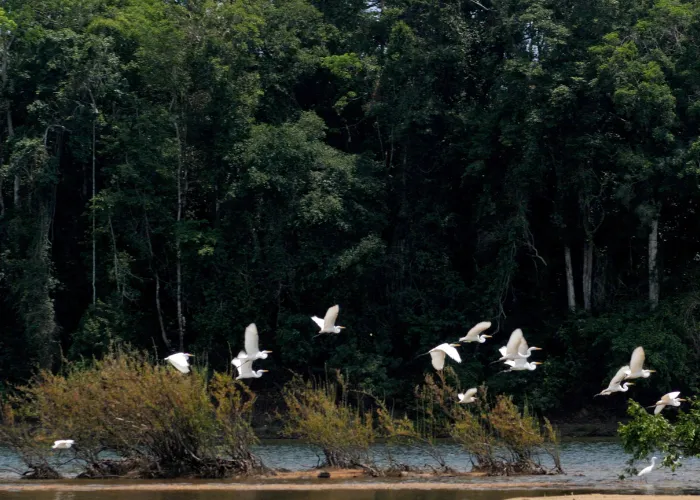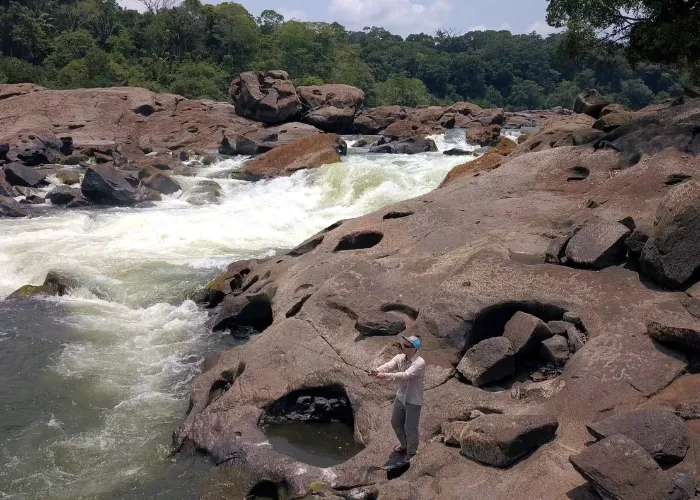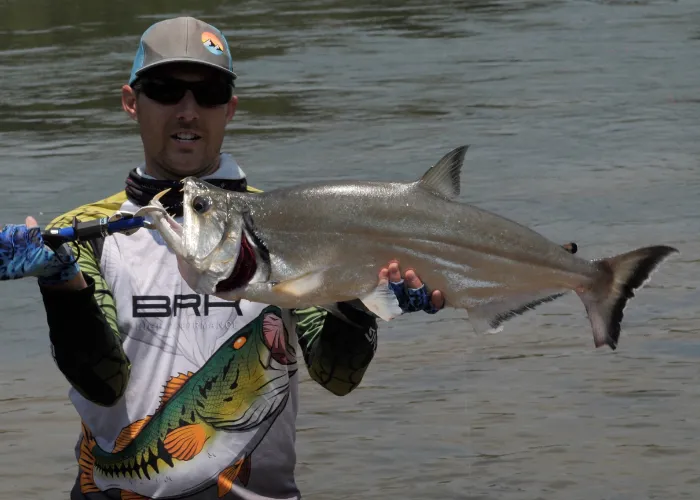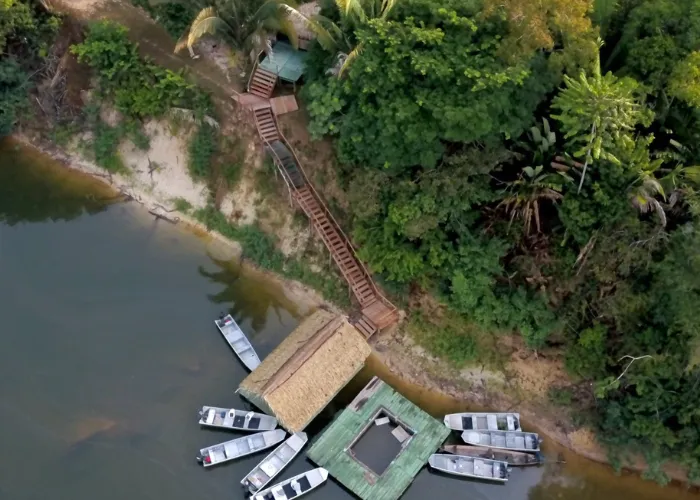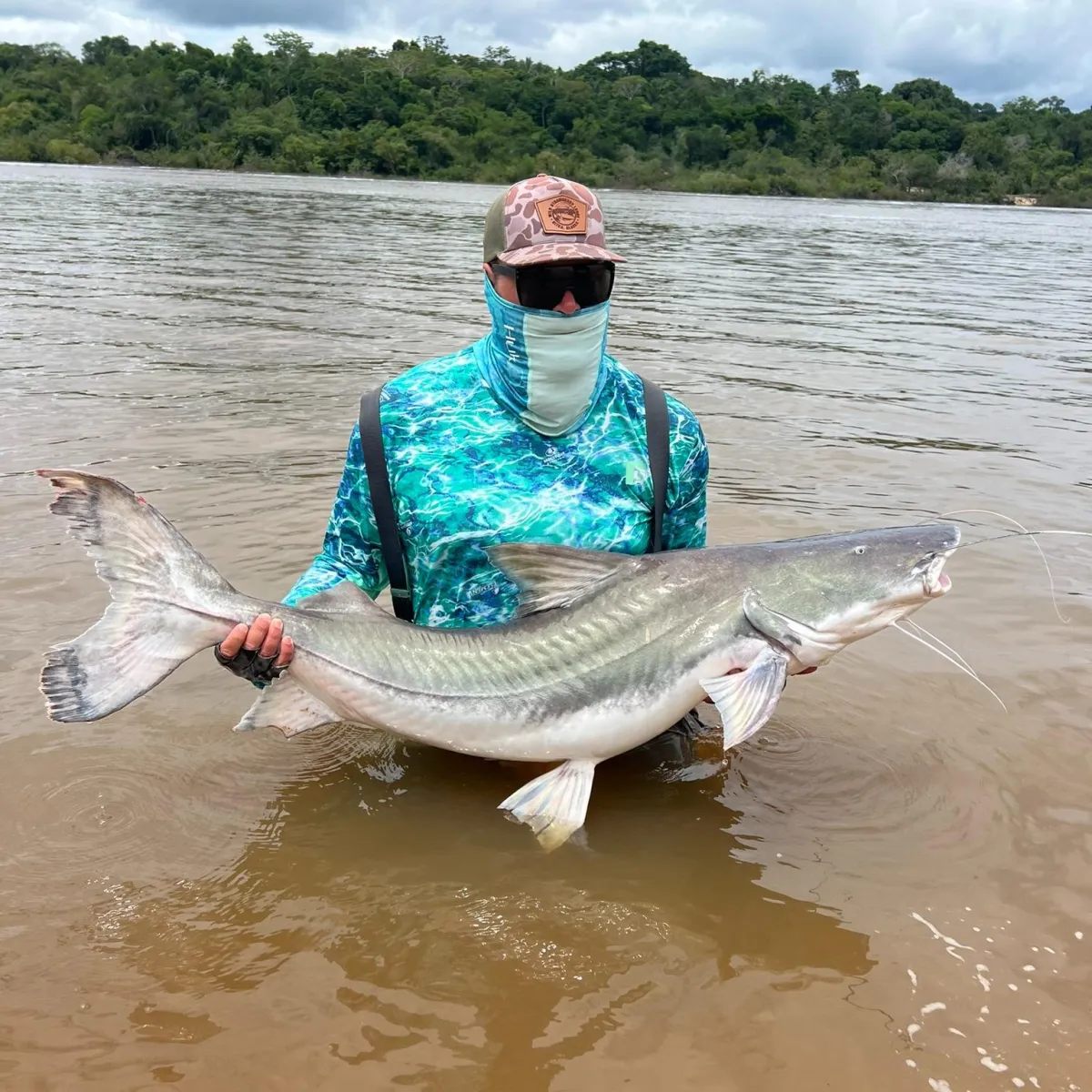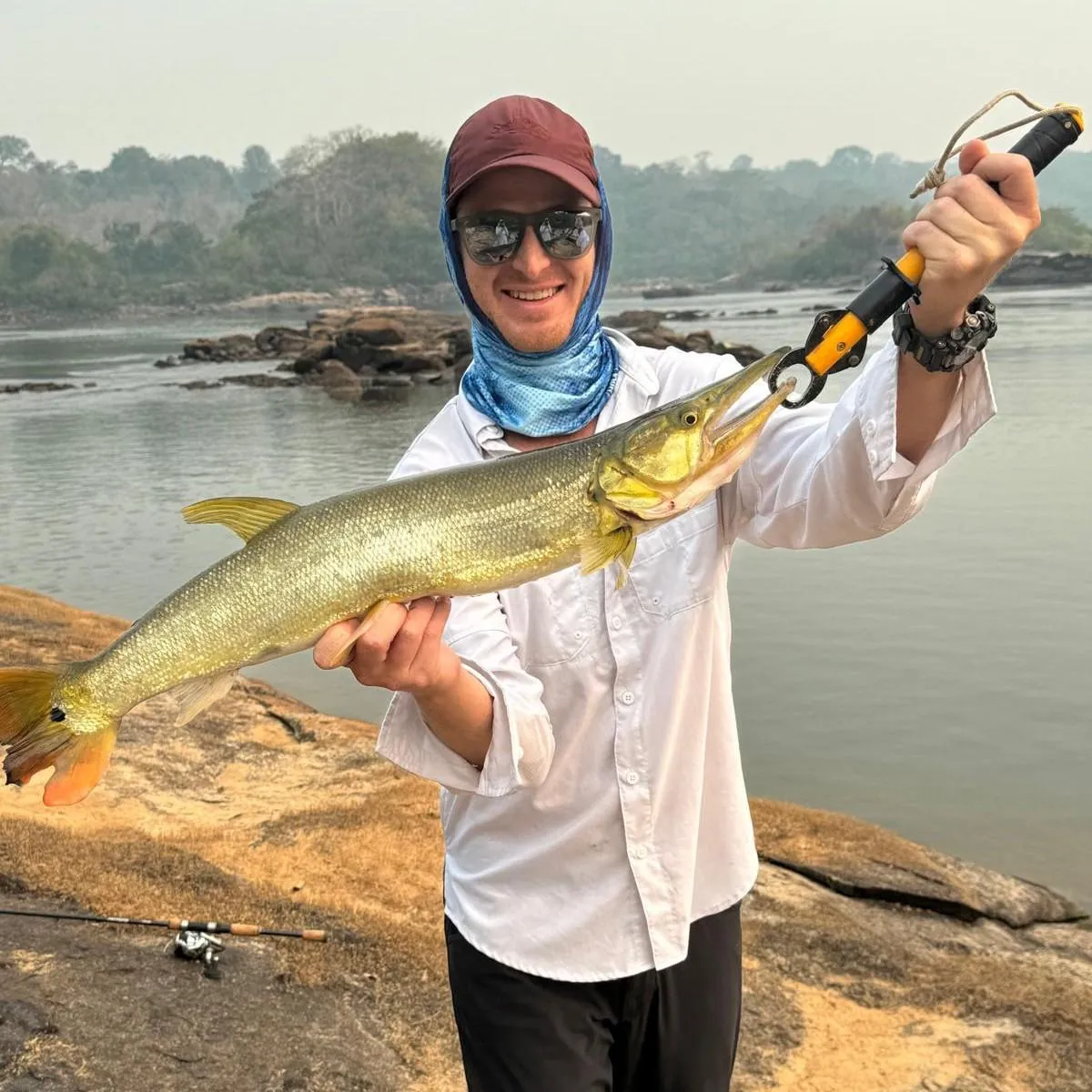Multi-Species Amazon Fishing Adventures
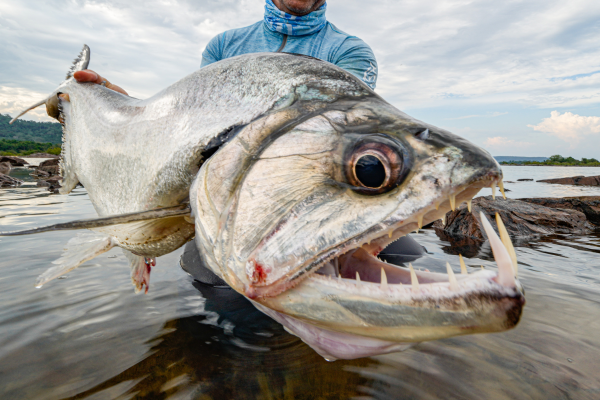
Not all Amazon fishing trips are about peacock bass. Some are about something broader—something wilder. Acute Angling’s multi-species expeditions open the door to a different kind of Amazon experience: one that blends intense fishing action with a deep immersion into the jungle itself. These trips focus on a variety of powerful predators, including the fierce payara, massive Amazon catfish, sharp-toothed black piranha, and other exciting species like wolfish, bicuda, and matrinxã. It’s fishing at its most unpredictable—and most exciting.
At the center of it all is the payara, a razor-fanged predator that strikes with shocking speed and puts up aerial battles that test even the most experienced anglers. Beneath the surface, enormous redtail catfish, jau, and elusive piraíba haunt the river bottom, offering deep, grinding fights that demand strength, patience, and endurance. Between these giants, the river remains alive with aggressive secondary species, providing action from the first cast to the last.
Payara & Multi-Species Focused Trips
Rio Aripuana
Variety, Action, and Jungle Beauty
This remote river delivers a high-action mix of payara, giant catfish, bicuda, Pinima peacock bass, and other species, in a setting that's both pristine and productive. Anglers stay in a comfortable jungle lodge with air-conditioned cabanas and enjoy six full days of non-stop fishing in rich, protected waters.
XINGU RIVER
Remote Fishing with Cultural Connection
Set in the Kayapo indigenous reserve, the Xingu trip blends great multi-species fishing with a chance to engage with one of the Amazon’s native communities. You'll catch payara, giant catfish, Melaniae peacock bass, and more while experiencing an unforgettable cultural exchange in one of the most remote places we go.
What truly sets these trips apart is the setting. You’ll fish in some of the Amazon’s most untouched and remote regions—where the jungle hums with life and every day brings incredible encounters. Monkeys call from the treetops, giant river otters slide along the banks, and macaws, toucans, and capybaras are common sights. Lucky anglers might even spot a tapir crossing a sandbar—or catch a glimpse of a jaguar in the early morning light. These trips don’t just feel like the Amazon—they are the Amazon, in all its raw beauty and intensity.
Our multi-species trips are timed to maximize the opportunities of catching the biggest variety in fish species. With expert guides, comfortable accommodations, and seamless logistics, you’ll be in the right place at the right time—ready to experience the jungle’s fiercest fishing in an atmosphere that’s both wild and welcoming.
TESTIMONIALS
What others are saying
“This experience was way beyond my expectations! I would recommend it to everyone that likes fishing. All of the staff were just incredible and took excellent care of us.”
- Mark S.

“Great trip! Fun atmosphere, wonderful food, and very comfortable accommodations. We caught 15 different types of fish and had a blast.”
- Travis W.

“Multi-species trip was extraordinary.”
- Dawn S.

“My father and I caught over 13 different species of fish! Total slam dunk”
- James S.

“Trip of a lifetime! Don't hesitate!”
- Bret A.

“Peacock Bass has been #1 on my bucket list for a very very long time. It was a trip of a lifetime. The bonus was catching all the other species. Giant Piraiba, Redtails, Piranha, Payara, and Jundia just to name a few. If anyone is thinking about a trip like this you need to look up Acute Angling. You won't be disappointed.”
- Laura S.

Join Us: Get monthly newsletters, discount offers and new content notifications exclusively for our members. Join for FREE below with your name and email.
Join Us: Get monthly newsletters, discount offers and new content notifications exclusively for our members. Join for FREE below with your name and email.
Read Our Newest Blogs
Lorem ipsum dolor sit amet, consectetur adipiscing elit. Aliquam

Amazon Rivers: Black, Blue, and White
The Amazon Basin is a vast waterway system. No two rivers are the same, but rivers are generally classified into three major buckets due to their color. Let’s look at these classifications and what causes the color variations.
BLACK WATER RIVERS:

Black Water and beautiful beaches make up the Rio Negro, the largest Black water river.
The most visited type of river by anglers due to it being the home of the largest species of peacock bass the Cichla, Temensis. Blackwater rivers are often described as a tea coloration.
A common question is what causes the tea coloration? To answer this question please see the explanation from the book The Amazon: What Everyone Needs to Know.
Blackwater rivers represent a freshwater tea created when plant matter that has fallen or washed into the river fails to completely decompose. The sandy soils surrounding blackwater rivers support few microorganisms that would otherwise decompose the leaf litter remnants, and the high concentrations of tannins and other plant compounds remain suspended in these rivers, giving them their characteristics color and making them highly acidic. (1)
Another valuable explanation comes from the book. Floods of Fortune: Ecology & Economy Along the Amazon.
Blackwater rivers, which are free of heavy sediment but dark in color. They owe their special character to the millions of years of erosion that have ground down the Brazilian and Guiana highlands into sands that now fill the Amazon Basin. Because millions of years of weathering, the sandy soils are very poor in nutrients. The streams that are born on them are among the most chemically pure on Earth. Why, then, the blackness?
It turns out that the sandy soils are too poor in microorganisms (especially fungi, bacteria, and invertebrates) to easily decompose organic matter. Organic chemicals, moreover, that would easily bind to clay sediments have no affinity for sand. The organic overload thus seeps through the soil and is carried into streams and rivers, rendering some as dark as tea. Blackwater rivers are highly acidic, with a pH usually below 4.0. (2)
To clarify, this doesn’t mean that Blackwater rivers are low in aquatic life. Peacock bass must have a stable and abundant food source to grow to the size that they do.
The lower Rio Negro harbors the most diverse fish fauna of any freshwater river in the world, having twice as many species (700) as all the rivers of western Europe combined. Most of these species are relatively small in size.” (1)
BLUE (OR CLEAR) WATER RIVERS:

Wolfish below a small rapid in a Clearwater Amazon River.
Blue water rivers are often clear and beautiful.
Rivers and streams that drain uplands to the east of the Andes are usually clear or almost so. These waterways arise in the old, worn-away mountains of the Brazilian Highlands to the south and the Guiana Highlands to the north. Chemically these clear water rivers range from acidic to nearly alkaline, but in general they are relatively nutrient-poor. The three largest clearwater rivers are the Rio Tapajos, Rio Xingu, and Rio Tocantins. All drain the Brazilian Highlands and enter the Amazon River from the south. (2)
Just as Rocky Mountain streams are effected by annual snow melt runoff, peak times during the rainy season can make these clear water streams temporarily off colored. For that reason, we generally do not fish during peak flows.
At the multi-species destination, the Rio Aripuanã, the river is clear and anglers can often spot fish while floating down the river. This makes for visual and exciting sport fishing opportunities.
WHITE WATER RIVERS

Rio Madeira
These White Water Rivers are not referring to rivers for paddle sports. These rivers have a high sediment load and are often a milky, coffee color. The Rio Solimoes which by many is considered the beginning of the Amazon River is a White Water River.
Amazonian whitewater rivers-despite the name-are more of a café-au-lait muddy brown than white. The color is due to sediments derived from the Andes.
These muddy rivers begin as clearwater streams in the Eastern Andes, where they start their descent into the Amazonian lowlands, gathering sediment along the way. As such, in the words of Michael Goulding, “the Andes are the main nutrient bank for the Amazon.” And the main body of the mighty Amazon-called the Rio Solimoes in Brazil-is a whitewater river. (1)
If you would like to see a map of the Amazon Basin distinguishing the major rivers by their river type, then please see the link below and scroll to the 4th page:
Resources:
The Amazon: What Everyone Needs to Know. Mark J. Plotkin. Page 38,39.
Flood of Fortune. Ecology & Economy Along The Amazon. Michael Guilding, Nigel J.H. Smith, and Dennis J. Mahar. Page 5, 6,7
A Classification of Major Naturally-Occuring Amazonian Lowland Wetlands. Multiple Authors. See page 3 for map.

(866) 832-2987

